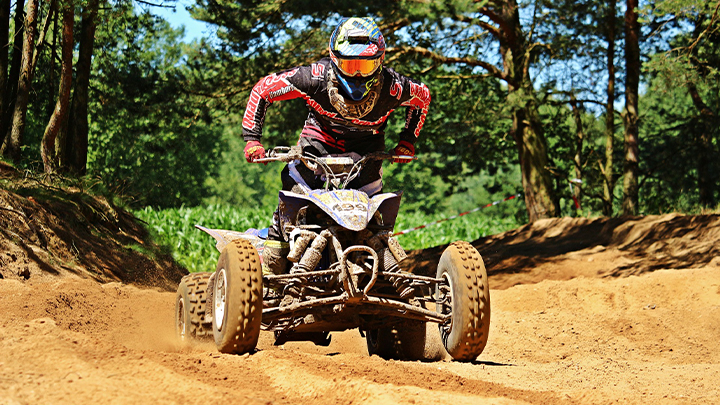ATV riding, controls, gear shifting.
ATVs are compact and versatile vehicles. They are used for extreme recreation and sports competitions. You can ride them effortlessly on off-road and rugged terrain.
Wide wheels and a powerful engine can easily overcome unpaved roads, potholes, ravines and slopes. Many dacha owners, hunters and fishermen prefer to travel on ATVs. They can carry loads on them. In winter, they replace snowmobiles.A trip on such motor vehicles brings a lot of pleasant emotions.
However, riding on quad bikes is an extreme form of transportation. And it is better to do it with professional instructors of the QuadRider club. Unlike motorcycles and other vehicles, they have a short wheelbase, small width and high center of gravity.
Improper driving often leads to rollovers. It is important to know how to drive your ATV correctly to avoid dangerous accidents. Appropriate training and compliance with the rules of driving – a guarantee of safety not only for drivers but also for pedestrians.
Where to start?
Before getting behind the wheel of a quad bike, you need to do the following:
- Purchase equipment: helmet, gloves, goggles, special suit and shoes. For driving in the cold season you will need thermal underwear. Accessories must be practical and comfortable. You can buy them in specialized stores. Wearing protective equipment at times reduces the likelihood of injury.
- Get proper training and get a driver’s license category “A1”.Learn to operate a motocross-cross-country vehicle can be in special schools. After passing the exam, future ATV riders are issued a license.
Operating a vehicle without a license and skills is fraught with serious injuries and large fines.
Safety rules
- Before you ride, wear protective gear and check your ATV for proper operation.
- Follow your instructor’s directions and instructions.
- Ride in unfamiliar terrain at low speed.
- Avoid steep slopes, bumps and slippery road surfaces unless you are experienced.
- Maintain an even speed to prevent the engine from stalling when climbing a hill.
- To avoid skidding or slipping on ice or other slippery surfaces, drive at a slow speed.
- Before turning around, make sure there are no other road users or obstacles nearby.
- When driving, keep your hands on the steering wheel and your feet on the footrests.
- Without sufficient experience, do not drive passengers.
It is strictly prohibited:
- ride without a helmet and safety glasses;
- operate a vehicle while under the influence of alcohol;
- intentionally hit and run over obstacles;
- drive onto the roadway designated for motor vehicles;
- remove your feet from the footrests, dangling them outside the ATV;
- ignore the instructors’ recommendations;
- get behind the wheel of the ATV before the age of 16.
- to overtake the ahead of the advancing column;
- touch the wheels, pulley, drive and other moving elements while riding;
- change gears while driving.
Driving Basics
The weight of the rider has a great effect on the handling of the motorcycle. Centrifugal forces are compensated by transferring body weight to the rear or front of the quadcopter.
ATVs are powerful machines that are prone to tipping and slipping. Improper driving can cost lives. Because of this, not only do you need to know how to ride an ATV, but you also need to learn the basic struts.
Riding on the ATV standing up, it is easier to avoid overturning. Among ATV riders there are 3 basic stands. Each of them is used in certain situations.
- Front – to load the front axle, climbing the hill and gain speed.Body maximum lean forward and slightly bend your knees.
- Mid-used when riding in a straight line. Your back and arms are relaxed and your legs are also slightly bent at the knees. Arms are slightly bent and turned outward.
- Rear – used for braking, loading the rear wheels and going downhill. The body is pushed back as much as possible and the head is tilted to the handlebars. Arms and legs are extended.
A dangerous variant of the stance is a tense back and straight legs. In this position, your body can not absorb shocks and impacts. The spine and joints are exposed to enormous loads. This position impairs control over the vehicle.
The main units of control
The main controls of the ATV are located on the handlebars.
The throttle trigger, differential lock switch (2WD /4WD/ LOCK) and the safety switch are located on the right handlebar. All-wheel drive is typically used for hauling loads, driving off-road and on slippery roads. The differential lock provides synchronized rotation of the wheels.
On the left side of the steering wheel is the ignition switch, engine start button, headlight switch and horn key.
